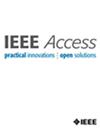一种基于信道注意的去噪自编码器U-Net和分类器(UNA-DAEC)用于高信噪比条件下的信号识别
IF 3.4
3区 计算机科学
Q2 COMPUTER SCIENCE, INFORMATION SYSTEMS
引用次数: 0
摘要
低功耗广域网(LPWAN)技术(如远程(LoRa)、Sigfox和IEEE 802.15.4g (ZigBee))的使用已经显著增长,解决了包括智能计量、农业、智能家居和医疗保健在内的广泛应用。这些技术的价值在于其简单、灵活的连接、低功耗、高效的调制技术和适中的数据速率。因此,它们可以共存于同一环境中,服务于类似或不同的应用程序。然而,越来越多的设备和技术的部署增加了它们之间干扰的可能性,导致性能下降,特别是在噪声功率超过信号功率的挑战性条件下的现实场景中。这些技术的迅速扩散,特别是在未经许可的工业、科学和医疗(ISM)频段内,强调需要有效的技术来确保无缝共存而不中断通信。为了解决这一挑战,我们研究了数据表示的作用,并提出了一种基于信道注意力的去噪自动编码器U-Net和分类器(UNA-DAEC)。该模型旨在对受高斯白噪声影响的多标签LPWAN信号进行降噪,并对同一环境下的重叠传输,特别是IEEE 802.15.4g、Sigfox和LoRa信号进行准确分类。UNA-DAEC的主要目标是在低信噪比(SNR)条件下实现可靠的信号分类。这是通过首先去噪噪声信号以获得最佳表示来实现的,通过单一的前向和后向传播实现高分类精度。我们的研究结果进一步表明,数据表示在识别和分类LPWAN信号中起着至关重要的作用,特别是在具有挑战性的低信噪比环境中,在-10 dB信噪比下,基于cnn的IQ、基于cnn的FFT和DAE+Classifier方法的性能分别显著提高44%、7%和26%。本文章由计算机程序翻译,如有差异,请以英文原文为准。
A Channel Attention-Based Denoising Autoencoder U-Net and Classifier (UNA-DAEC) for Signal Identification Under Challenging SNR Conditions
The use of Low-Power Wide Area Network (LPWAN) technologies, such as Long Range (LoRa), Sigfox, and IEEE 802.15.4g (ZigBee), has grown significantly, addressing a wide range of applications including smart metering, agriculture, smart homes, and healthcare. These technologies are valued for their simplicity, flexible connectivity, low power consumption, efficient modulation techniques, and moderate data rates. As a result, they can coexist within the same environment, serving either similar or distinct applications. However, the increasing deployment of devices and technologies has amplified the likelihood of interference between them, leading to performance degradation, particularly in real-world scenarios under challenging conditions where noise power surpasses signal power. The rapid proliferation of these technologies, especially within unlicensed Industrial, Scientific, and Medical (ISM) frequency bands, underscores the need for effective techniques to ensure seamless coexistence without disrupting communication. To address this challenge, we investigate the role of data representation and propose a Channel Attention-based Denoising Autoencoder U-Net and Classifier (UNA-DAEC). This model is designed to denoise multi-label LPWAN signals affected by white Gaussian noise and accurately classify overlapping transmissions, specifically IEEE 802.15.4g, Sigfox, and LoRa signals, within the same environment. The primary objective of UNA-DAEC is to achieve reliable signal classification in low Signal-to-Noise Ratio (SNR) conditions. This is achieved by first denoising the noisy signals to obtain optimal representations, enabling high classification accuracy with a single forward and backward propagation. Our results further demonstrate that data representation plays a critical role in identifying and classifying LPWAN signals, particularly in challenging low-SNR environments, with a significant performance of 44%, 7%, and 26% over CNN-based IQ, CNN-based FFT and DAE+Classifier methods, respectively, at -10 dB SNR.
求助全文
通过发布文献求助,成功后即可免费获取论文全文。
去求助
来源期刊

IEEE Access
COMPUTER SCIENCE, INFORMATION SYSTEMSENGIN-ENGINEERING, ELECTRICAL & ELECTRONIC
CiteScore
9.80
自引率
7.70%
发文量
6673
审稿时长
6 weeks
期刊介绍:
IEEE Access® is a multidisciplinary, open access (OA), applications-oriented, all-electronic archival journal that continuously presents the results of original research or development across all of IEEE''s fields of interest.
IEEE Access will publish articles that are of high interest to readers, original, technically correct, and clearly presented. Supported by author publication charges (APC), its hallmarks are a rapid peer review and publication process with open access to all readers. Unlike IEEE''s traditional Transactions or Journals, reviews are "binary", in that reviewers will either Accept or Reject an article in the form it is submitted in order to achieve rapid turnaround. Especially encouraged are submissions on:
Multidisciplinary topics, or applications-oriented articles and negative results that do not fit within the scope of IEEE''s traditional journals.
Practical articles discussing new experiments or measurement techniques, interesting solutions to engineering.
Development of new or improved fabrication or manufacturing techniques.
Reviews or survey articles of new or evolving fields oriented to assist others in understanding the new area.
 求助内容:
求助内容: 应助结果提醒方式:
应助结果提醒方式:


